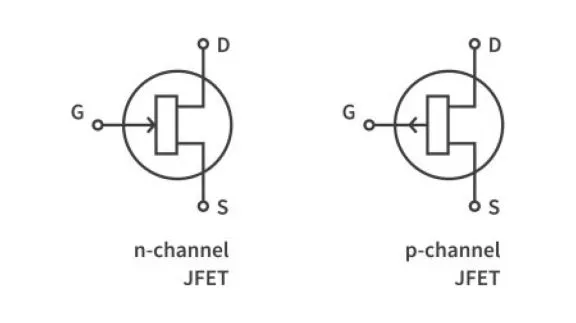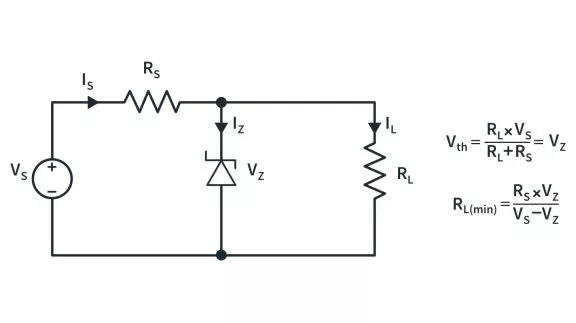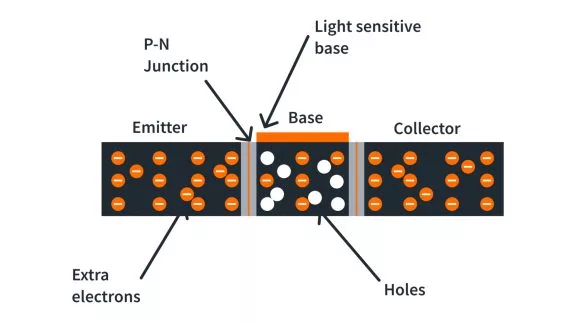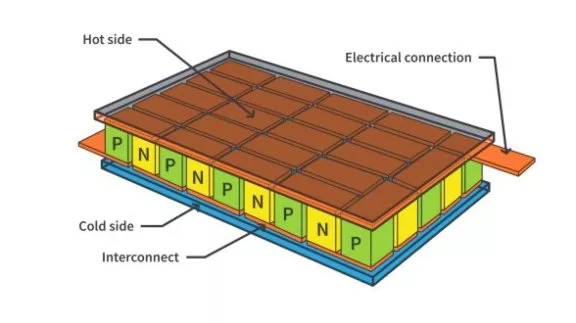How does a diode work? (Part 1 - The PN Junction)
Published
In our previous tutorials, we’ve discussed the basics of semiconductors, band gap, current carriers, and its classification. We learned that in order for a semiconductor material to be useful, it needs to be doped with an impurity atom and it could be a pentavalent atom to produce an n-type material or a trivalent atom to come up with a p-type material. Now, if we take a small piece of semiconductor material and dope half of it with a trivalent atom and the other half with a pentavalent atom, that would result in a semiconductor device with p-type and n-type portions, with a pn junction where they meet. In this tutorial, we are going to talk about this pn junction, as it forms the basic definition of a diode.
The PN Junction
After doping an intrinsic semiconductor material, usually silicon, so that part of it is p-type and the other part is n-type, a pn junction is formed at the boundary between the p and n regions. In the p region, the majority carriers are holes while in the n region, the majority carriers are free electrons.

Formation of the Depletion Region
When the pn junction is formed, the free electrons in the n region begin to diffuse across the junction and combine with the holes in the p region near the junction. This makes the n region lose free electrons and creates a layer of positive charges near the junction. As the free electrons combine with the holes in the p region, the p region also loses holes and creates a layer of negative charges near the junction. These two layers of positive and negative charges create a region where charge carriers are depleted. This region is called, fittingly, the depletion region.

In reality, the depletion region is formed in an incredibly short amount of time and its width is very thin compared to the p and n regions. The depletion region will continue to expand until the total negative charge in the depletion region repels any further diffusion of electrons into the p region. This time, the depletion region acts as a barrier to the movement of electrons across the junction.
Barrier Potential
In the depletion region, there are many positive and negative charges on opposite sides, and as described by Coulomb’s law, if there’s a positive charge and a negative charge near each other, there is a force acting on these charges.

The forces between the positive and negative charges in the depletion region create an electric field which blocks the free electrons from the n region to flow across the junction. In order for the electrons to move through this electric field, a certain amount of voltage equal to the barrier potential of the electric field must be applied across the pn junction with the proper polarity.
Energy Diagrams of the PN Junction and Depletion Region
Now, let’s try to analyze the formation of the pn junction and the depletion region through an energy diagram. The energy levels of the valence and conduction bands in an n-type material are lower than the valence and conduction bands in a p-type material. This is because trivalent impurities exert lower forces on the outer-shell electrons and lower forces mean that the electron orbits are slightly larger and have greater energy.

If we try to examine the energy diagram for a pn junction at the instant of formation, we can see that the valence and conduction bands in the n region are at a noticeably lower energy level compared to the p region valence and conduction bands. But, we can also see that the upper part of the conduction band in the n region and the lower part of the conduction band in the p region overlap. In this case, the free electrons in the upper part of the conduction in the region can easily diffuse across the pn junction and temporarily become free electrons in the lower part of the p region conduction band. Temporary because, after crossing the pn junction, these free electrons rapidly lose energy and fall into the holes in the valence band of the p region.
As the free electrons from the upper part of the n region conduction band cross the junction, the depletion region starts to form and expand. But, the energy level of the n region conduction band also starts to decrease. This process will continue until there will be no electrons left in the n region conduction band with enough energy to cross the junction. At that time, the junction is at equilibrium and the depletion region is complete because the diffusion is done.

As you can see in the energy diagram, the top of the n region conduction band and the bottom of the p region conduction band is now aligned and this time, there’s now an energy “hill” that the electron from the n-region must climb in order to get to the p region. Another thing to observe here is that the energy level of the valence band in the n region also decreased. So the energy gap between the valence band and the conduction band in the n region remains the same.
Summary
In this tutorial, we discussed about the pn junction, its formation and the formation of the depletion region. We also discussed the barrier potential and the energy diagrams of the pn junction and the depletion region. If you have any questions, leave it in the comments below and if you’ve found this interesting or helpful, give it a like and subscribe to our channel!
Check Yourself
10 Questions
Tutorial FAQs
When does the depletion region in a PN junction form—when the P and N regions are joined, or when a voltage is applied?
The depletion region forms naturally when the P and N regions are joined and changes in width depending on the applied voltage: it widens under reverse bias and narrows under forward bias.
How can electrons exist in the conduction band of a PN junction in equilibrium without external energy?
Even in equilibrium, there are electrons in the conduction band due to thermal energy and doping. The number of electrons may not be significant without an external bias, but they are present.
What exists in the depletion layer of a PN junction if no external voltage is applied?
Without external voltage, the depletion layer still contains ions but no free charge carriers. An external voltage is required to see free carriers passing through the layer.
Why doesn't a diode emit light like an LED?
A diode does emit light, often in the infrared range. However, LEDs are designed specifically to emit visible light at particular wavelengths.
What is the difference between a hole and a positive charge?
A hole is the absence of an electron and is considered mobile, while a positive charge (ion) is an atom missing an electron. This ion, or positively charged atom, is not mobile, unlike a hole.

Get the latest tools and tutorials, fresh from the toaster.
















